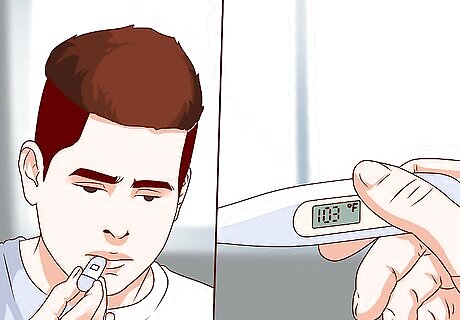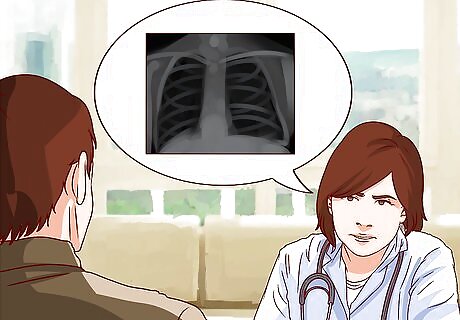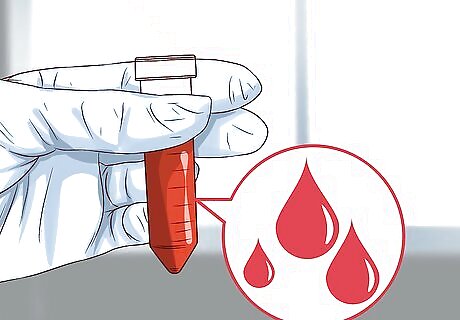
views
Understanding the Different Symptoms

Consider the duration and type of pain. The onset of muscle pain is usually very different from lung pain. Moderate-to-severe muscle pulls tend to hurt right away, whereas mild strains can take a day or so to become sore. Muscle pain is almost always associated with overexertion or some type of trauma, so the cause tends to be obvious. Furthermore, lung pain usually can't be pinpointed to any moment in time or event and tends to be more constant. Car accidents, slip and falls, trauma from sports (football, rugby, ice hockey) and lifting overly-heavy weights at the gym all tend to trigger sudden onset of pain. Lung cancer, infections and inflammations gradually get worse (within days or months) and are associated with many other symptoms. Pneumothorax is a life-threatening lung condition that can happen due to trauma, strenuous activity, asthma, pneumonia, or cancer. It can come on gradually or suddenly. If you feel pain when you inhale, are breathing shallowly, have a cold, or have a history of coughing or bronchitis, it may be lung pain. Alternatively, costochondritis (inflammation of the cartilage surrounding your ribs) can results in focal tenderness and pain with movement.

Be on the lookout for coughing. Many lung conditions / diseases can cause chest pain, including: lung cancer, lung infections (bacterial and viral pneumonia, bronchitis), pulmonary embolism (blood clot), pleurisy (inflamed lung membranes), punctured lung and pulmonary hypertension (high blood pressure in the lungs). Almost all of these diseases and conditions lead to coughing and/or wheezing. In contrast, a pulled muscle in the chest or torso will not trigger coughing, although it may cause discomfort with deep breathing if the muscle is attached to a rib. Coughing up blood is common with lung cancer, advanced pneumonia and punctures from lung trauma. Get medical attention immediately if you see blood in your sputum. Muscle associated with ribs include the intercostals, obliques, abdominals and scalene muscles. These muscles move with respiration, so strains / pulls in them trigger pain with deep breaths, but don't cause coughing.

Try to locate the source of pain. Pulling a muscle in the chest or upper torso area is common from working out at the gym or playing sports. The pain from a muscle strain is often described as sore, stiff or achy. It's typically unilateral (on one side of the body) and easily located by feeling around near the source of pain. As such, feel around your chest and see if you can locate the area of discomfort. When they're injured, muscles often spasm, which feels like ropy bands. If you can locate an area of discomfort, then you're dealing with a muscle pull and not a lung issue. Most lung issues generate diffuse pain (often described as sharp) which can't be localized on the outside of the chest. Feel carefully around your ribs, as those muscles are commonly pulled with too much rotation or side bending. If you can pinpoint severe pain near your chest bone (sternum), then you may be dealing with torn rib cartilage instead of a simple muscle pull. Muscle pulls usually only generate pain when you move your body or breathe deeply, whereas lung issues (particularly cancer and infections) can cause constant pain. Muscles that are directly over your lungs include the pectorals (major and minor groups). These muscle can be strained from doing push-ups, chin-ups or working the "pec deck" at the gym.

Look closely for any bruising. With your shirt and undergarments off, look at your chest / torso very carefully for any bruising or redness. Moderate-to-severe muscle pulls involve partially tearing the muscle fibers, which bleed into surrounding tissue. The result is a dark purple / red bruise that fades over time to become yellowish. Some redness on your torso may also indicate trauma from playing sports or falling. In contrast, lung diseases / conditions don't typically involve visible bruising, unless you're dealing with a punctured lung from severely broken ribs. Mild muscle pulls seldom leave bruises or redness as evidence, although they often cause some degree of localized swelling. In addition to bruising, injured muscles sometimes twitch or quiver for a few hours (or even days) while they're trying to heal. These "fasciculations" are further evidence of a muscle pull instead of a lung issue.

Take your temperature. Many common causes of lung pain are caused by pathogenic microorganisms (bacteria, viruses, fungi, parasites) or environmental irritants (asbestos, sharp fibers, dust, allergens). Therefore, in addition to chest pain and coughing, an increase in body temperature (fever) is very common with most lung afflictions. In contrast, muscle pulls almost never impact your core body temperature, unless they are severe enough to cause hyperventilation. As such, measure your temperature with a digital thermometer underneath your tongue. Average oral temperatures taken with a digital thermometer tend to be around 98.2 °F (36.8 °C). Mild fevers are often helpful because they represent your body trying to defend itself against infections. However, high fevers (103°F or greater for an adult) are potentially dangerous and should be closely monitored. Chronic, long-term lung diseases (cancer, obstructive pulmonary disease, tuberculosis) often only increase body temperature slightly.
Seeking a Medical Diagnosis

Make an appointment with your family physician. The best way to tell the difference between a pulled muscle or lung pain is to visit your primary care provider. Muscle pulls invariably resolve themselves after a few days (or weeks with severe strains), so if your chest / torso pain is lingering beyond that time frame or actually getting worse, then call your doctor for an appointment. Your doctor will take a history, give you a physical exam and listen to your lungs as you breath. Noisy breathing (crackling or wheezing) is a reliable sign that something is either blocking your airways (debris or fluid) or making them too narrow (via swelling or inflammation). In addition to coughing up blood and chest pain with deep breathing, other signs of lung cancer include hoarseness, loss of appetite, relatively rapid weight loss and general lethargy. Your doctor can take a sputum sample (mucus / saliva / blood) and try to culture it, which could indicate a bacterial infection (bronchitis, pneumonia). However, your doctor will more likely use x-rays or physical exams for diagnosis.

Get a chest x-ray. Once your doctor rules out a muscle pull and suspects a possible lung infection, he/she will take a chest x-ray. A chest x-ray can visualize broken ribs, fluid accumulation in the lungs (pulmonary edema), lung tumors and any lung tissue damage from smoking, environmental irritants, emphysema, cystic fibrosis or previous bouts of tuberculosis. Advanced lung cancer is virtually always detected via chest x-rays, but the early stages of the disease can sometimes escape detection. A chest x-ray may help detect signs of congestive heart disease. Chest x-rays do not show muscle pulls or strains of the chest or upper torso. If your doctor suspects a torn muscle or tendon, he/she might send you for a diagnostic ultrasound, MRI or CT scan. A CT scan creates a cross-sectional image of your chest, which can help the doctor diagnose your condition if a physical exam and chest x-ray are not definitive.

Get blood work done. Your doctor may decide it is necessary to draw blood. An acute lung infection (bronchitis, pneumonia) will trigger your white blood cell levels to spike because they are used by your immune system to kill pathogens such as bacteria and viruses. A blood test can also give you an idea of the amount of oxygen in the bloodstream, which is an indirect measure of lung function. In contrast, blood tests cannot confirm or rule out pulled or strained muscles, even if they severe. Blood tests will not indicate your level of oxygenation. A test called a sedimentation rate can help determine if your body is under stress and has an existing chronic inflammatory condition. Blood tests are not as helpful for diagnosing lung cancer — x-rays and a tissue biopsy (sample) are more valuable.



















Comments
0 comment